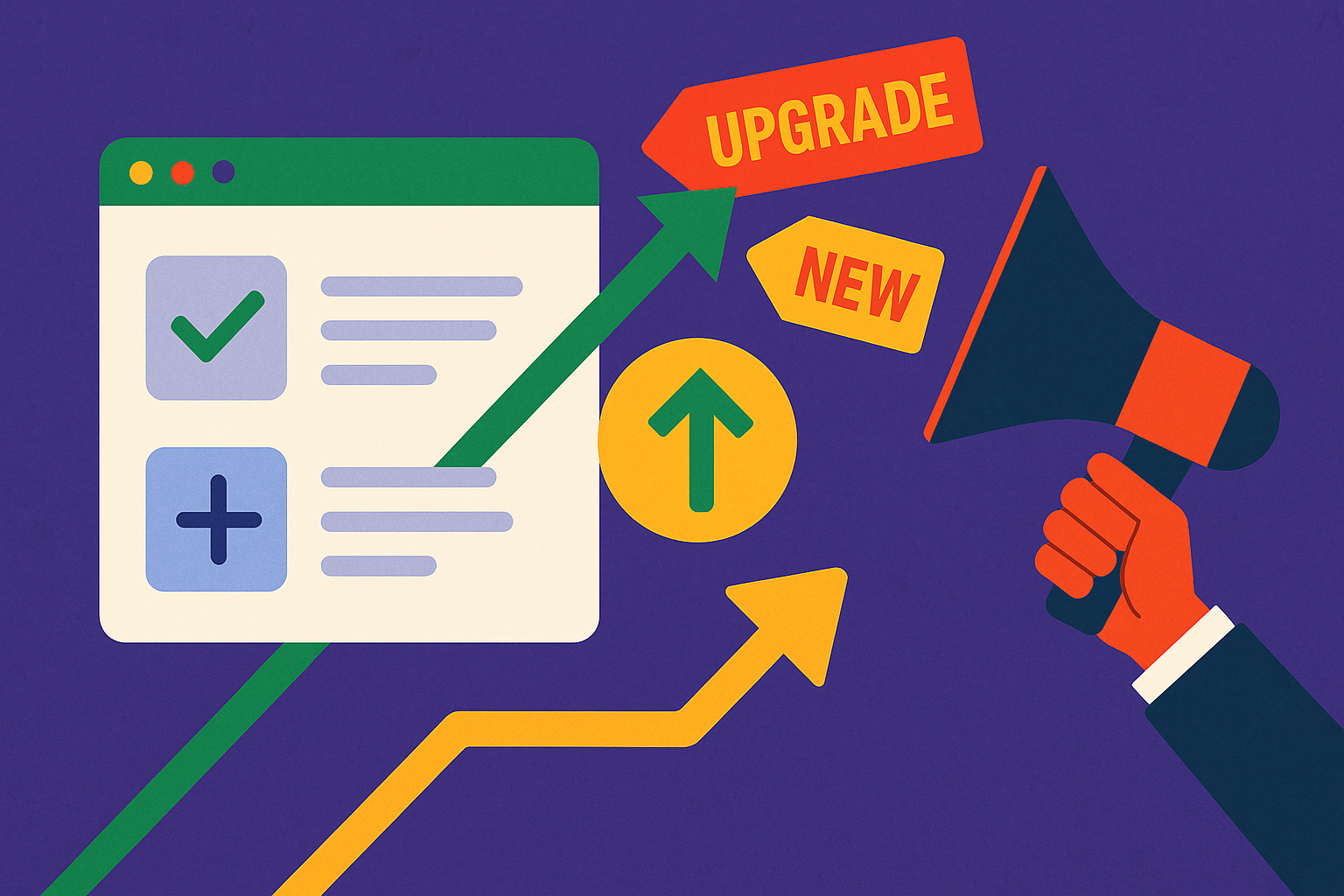Key Takeaways
- Tracking changelog metrics helps you improve engagement, feature adoption, and ROI.
- Focus on 8 key metrics: page views, time on page, scroll depth, CTR, subscriber growth, email open rate, feedback rate, and support ticket reduction.
- Use benchmarks to measure success and tools like SimpleDirect to streamline tracking.
Introduction
If you can’t measure it, you can’t improve it. For product teams, changelogs are more than just a list of updates—they’re an opportunity to communicate, build trust, and encourage feature adoption. But how do you know if your changelogs are working?
This guide breaks down the 8 key metrics to track, why they matter, what good benchmarks look like in 2025, and practical tips to improve them. Plus, we’ll explore tools that make tracking effortless.
Why Measuring Changelog Performance Matters
If you’re not tracking your changelogs, here’s what you might be missing:
- Missed engagement opportunities: Updates that users never see or read.
- Low feature adoption: Users skip over new features because they’re unaware or unmotivated.
- Increased support tickets: Confusing updates lead to more questions for support teams.
- Lack of ROI proof: Leadership may undervalue changelog efforts without data to back them up.
Simply put, measuring changelog engagement ensures you’re not wasting time writing updates no one reads. It also gives you actionable insights to improve communication and user satisfaction.

The 8 Key Metrics to Track
Here’s what you should measure to understand and improve your changelogs:
- Page Views / Unique Visitors
- What it tells you: How many users are landing on your changelog.
- Why it matters: It’s the first metric to know if users are even seeing your updates.
- Good benchmark in 2025:
- Small teams: ~500 views/month
- Mid-sized SaaS: 2,000+ views/month
Quick Tip: Promote your changelog via email, in-app pop-ups, and social media to boost traffic.
- Time on Page
- What it tells you: How long users spend reading your changelog.
- Why it matters: Low time suggests users aren’t engaging, while high time indicates they’re reading or finding value.
- Good benchmark:
- 30-60 seconds for shorter updates.
- 60-90 seconds for more detailed changelogs.
Quick Tip: Use bold headings, bullet points, and visuals to make content skimmable and engaging.
- Scroll Depth
- What it tells you: How far users scroll on your changelog page.
- Why it matters: If users drop off halfway, they might find the content too long or irrelevant.
- Good benchmark:
- 75%+ scroll depth is ideal.
Quick Tip: Place the most important updates and CTAs near the top to capture early attention.
- Click-Through Rate (CTR)
- What it tells you: How many users click links in your changelog (e.g., tutorials, feature demos).
- Why it matters: High CTR indicates users are taking action based on your updates.
- Good benchmark:
- 2-5% CTR is typical for changelogs.
Quick Tip: Use action-driven CTAs like “Learn More” or “Try It Now” to encourage clicks.
- Subscriber Growth Rate
- What it tells you: How many users subscribe to changelog updates.
- Why it matters: A growing subscriber base shows users value staying informed.
- Good benchmark:
- 2-4% growth per update is strong.
Quick Tip: Add a clear “Subscribe for Updates” button or popup on your changelog page.
- Email Open Rate
- What it tells you: The percentage of users who open your changelog email.
- Why it matters: A strong open rate means your subject lines and timing are effective.
- Good benchmark:
- 25-35% open rate for product updates.
Quick Tip: A/B test subject lines and send times. For example:
" Major Product Update Inside!"
"New Feature: Save Time with Bulk Actions"
- Comment/Feedback Rate
- What it tells you: How many users leave feedback or comments on your changelog.
- Why it matters: Feedback means users are engaging and offering valuable input.
- Good benchmark:
- 1-3% feedback rate is common.
Quick Tip: Add a one-click emoji reaction system or a simple feedback form to encourage responses.
- Support Ticket Reduction
- What it tells you: Whether your changelog reduces confusion and prevents support tickets.
- Why it matters: A well-written changelog can proactively answer user questions.
- Good benchmark:
- 10-20% ticket reduction after a major update.
Quick Tip: Include FAQs or links to help docs within your changelog to address common questions.
Benchmarks: What’s Good vs Great?
Here’s a quick reference table to evaluate your performance:
| Metric | Good | Great |
|---|---|---|
| Page Views | 500-1,000/month | 2,000+/month |
| Time on Page | 20-30 seconds | 50+ seconds |
| Scroll Depth | 50-75% | 75%+ |
| Click-Through Rate | 2-3% | 5%+ |
| Subscriber Growth Rate | 1-2% | 3%+ |
| Email Open Rate | 20-25% | 30%+ |
| Feedback Rate | 1% | 3%+ |
| Support Ticket Reduction | 5-10% | 15%+ |
How to Improve Each Metric
Here’s how to optimize your changelogs for better performance:
- Page Views:
- Promote changelogs through multiple channels (email, socials, in-app).
- Link to changelogs in feature announcements.
- Time on Page:
- Use concise language and bold headings.
- Add screenshots or GIFs to explain features visually.
- Scroll Depth:
- Add a summary or TL;DR section at the top.
- Prioritize the most important updates early.
- CTR:
- Use clear, action-oriented CTAs.
- Test different button placements and copy.
- Subscriber Growth:
- Offer exclusive updates or early access perks.
- Place subscription forms prominently.
- Email Open Rate:
- Personalize subject lines (e.g., “Hey [Name], here’s what’s new”).
- Send updates at optimal times (e.g., Tuesday mornings).
- Feedback Rate:
- Add a feedback link or emoji reactions at the bottom of the changelog.
- Respond to comments to encourage more engagement.
- Support Ticket Reduction:
- Include FAQs or links to help docs.
- Use plain language to explain changes.

Tools for Tracking Changelog Metrics
Here are the best tools to make tracking seamless:
- SimpleDirect: Tracks page views, scroll depth, and CTR automatically.
- Google Analytics: Monitors traffic and engagement metrics.
- Hotjar: Visualizes scroll depth and user behavior.
- Intercom: Tracks email open rates and collects feedback.
Want to see your changelog metrics in real-time? Start a free trial of SimpleDirect today.
Ready to Optimize Your Changelogs?
- Try SimpleDirect: Track your metrics effortlessly.
- Read Next:
- Use Our ROI Calculator: See how much time and money you could save with better changelog tracking.






